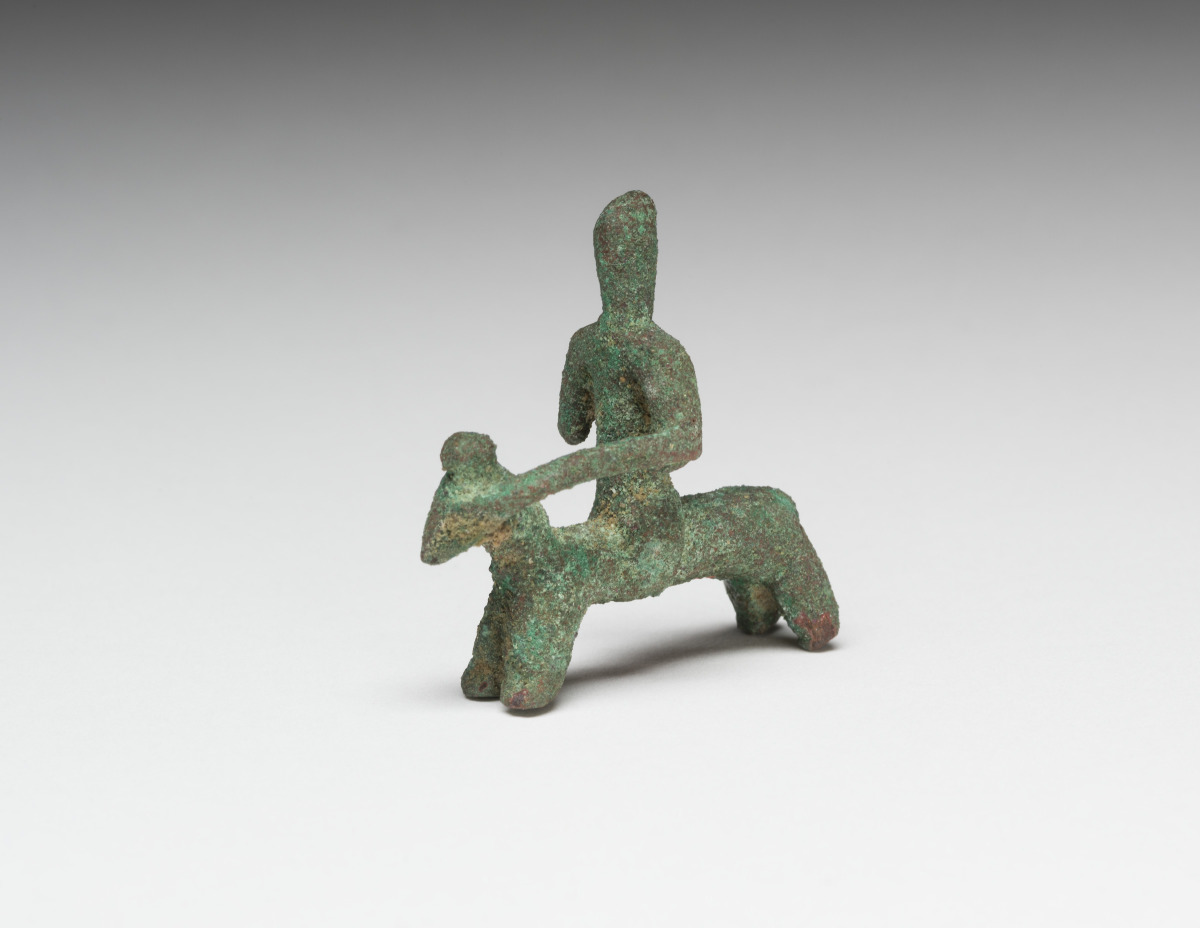
Equestrian Figurine (Primary Title)
Unknown (Artist)
In Mali, the ancient cities of Djenne to Timbuktu lie along the Niger River about two hundred miles apart. Discoveries of terracotta statues, metalwork, and pottery in the Djenne region during the 1940s opened a new chapter in the history of African art.
Metal objects like this are made of copper alloy, typically brass—a mixture of copper and zinc. It is difficult to date these works precisely, but they were probably made between the 14th and 18th centuries. Their greenish color results from oxidation of the copper. When first made, they would have been polished to a shiny golden luster.
Djenne and Timbuktu factored prominently on the Saharan trade routes connecting to the Mediterranean basin. Given the absence of copper as a natural resource in western Africa, these works demonstrate its import across the desert, usually from Morocco, where supplies often originated from as far away as Europe. Gold and salt were among the primary products of exchange in return.
Richard B. Woodward, African Art (Richmond, VA: Virginia Museum of Fine Arts, 1994) pp. 44-45, ill.
Some object records are not complete and do not reflect VMFA's full and current knowledge. VMFA makes routine updates as records are reviewed and enhanced.

